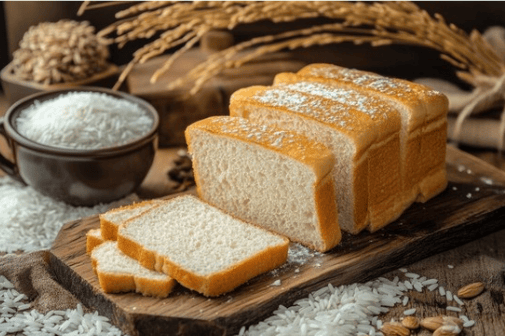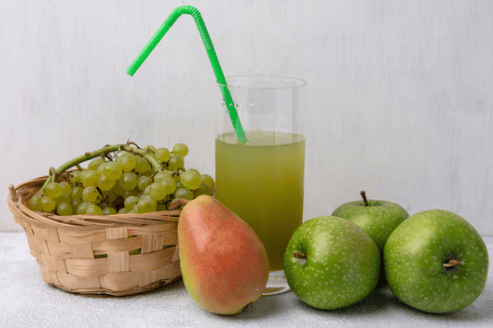Knowing which foods raise blood sugar quickly isn’t just useful—it can be life-saving. For people living with diabetes, recognizing the impact of food on blood glucose is essential for daily management. When blood sugar levels drop too low—a condition known as hypoglycemia—the right fast-acting foods can restore levels quickly and prevent dangerous symptoms like dizziness, confusion, or even loss of consciousness.
On the other hand, knowing which foods to avoid during a hyperglycemic episode is equally important. Certain carbohydrates cause rapid spikes in blood sugar and can make blood glucose management more challenging, especially for those using insulin or oral medications.
Whether you’re managing diabetes yourself or caring for someone who is, understanding how food affects blood glucose can make a big difference. It’s especially critical during emergencies or physical activity, when glucose levels can swing unpredictably.
This guide outlines the most effective options to raise blood glucose fast, helping you respond quickly and safely when time matters most.
How Food Affects Blood Sugar
Understanding how food affects blood sugar starts with one key nutrient: carbohydrates. Carbs are your body’s main source of glucose—the sugar that fuels your cells. But not all carbs work the same way.
There are two types: simple carbs and complex carbs. Simple carbs (like white bread, sugary drinks, or candy) break down quickly in your digestive system, leading to a rapid rise in blood sugar. Complex carbs (like whole grains, beans, and vegetables) digest more slowly, creating a gradual increase in glucose levels.
This is where the Glycemic Index (GI) comes in. GI ranks foods on a scale of 0 to 100 based on how fast they raise blood sugar after eating. High-GI foods (70 or above) are absorbed quickly and cause a sharp spike. Low-GI foods (55 or less) break down slowly and help keep glucose levels stable.
A related concept is Glycemic Load (GL), which also considers portion size. For example, watermelon has a high GI, but its glycemic load is low due to its high water content.
Knowing which glycemic index foods affect your blood sugar helps you make better choices—whether you’re trying to avoid sudden spikes or need to raise glucose levels fast.
Top Foods That Raise Blood Sugar Quickly
When blood sugar drops too low—whether due to missed meals, too much insulin, or sudden exertion—quick action is vital. Fast-acting carbohydrates are essential tools, especially for people with diabetes or those prone to hypoglycemia. This high glycemic foods list walks you through the most effective options to raise glucose levels fast and safely.
Each of these glucose-raising snacks works a little differently based on its sugar type, form (liquid or solid), and how quickly the body digests it.
Glucose Tablets or Gels
Why they’re best: Glucose tablets and gels are specifically designed for medical use. They contain pure dextrose, a type of glucose, and are absorbed directly into the bloodstream without needing digestion.
- Speed: Often raises blood sugar within 5–10 minutes.
- Serving: Most tablets contain 4 grams of carbs; a typical hypoglycemia correction is 15–20 grams.
- Pros: Portable, pre-measured, fast, and recommended by the American Diabetes Association (ADA).
A study published in Diabetes Care confirms glucose tablets are more predictable than food when correcting mild hypoglycemia.
100% Fruit Juice (e.g., Orange, Apple, Grape)
Why it works: Fruit juice contains fructose and glucose, two fast-digesting sugars. The liquid form allows it to pass quickly from the stomach to the intestines, where it’s absorbed rapidly.
- Serving: 4 oz (½ cup) of orange juice contains ~15g of carbs.
- Effectiveness: Often noticeable in 10–15 minutes.
- Best for: Early stages of hypoglycemia, or mild symptoms like dizziness or sweating.
Note: Avoid “juice drinks” with added sugars or lower juice content. Go for 100% juice for accuracy and safety.
Regular Soda (Not Diet)
Why it works: Regular soda (such as cola or lemon-lime varieties) is packed with sucrose or high-fructose corn syrup, which breaks down quickly in the body.
- Serving: ½ can (~6 oz) delivers 15–18g of fast-acting carbs.
- Time to effect: As fast as 5 minutes.
- Important: Diet sodas have zero sugar and won’t help during a glucose crash.
A study in The American Journal of Clinical Nutrition confirmed that sugary beverages can rapidly spike blood glucose levels, especially when consumed on an empty stomach.
Candy (e.g., Jelly Beans, Skittles, Smarties)
Why it works: These candies contain simple sugars like glucose or sucrose. They’re almost entirely sugar, so they dissolve quickly and enter the bloodstream fast.
- Serving: About 15–20 small candies = 15 grams of carbs.
- Pros: Convenient, shelf-stable, and tasty—great for children or teens.
Tip: Avoid chocolate for emergencies—it contains fat, which slows down sugar absorption.
White Bread and White Rice

Why they raise blood sugar: Refined grains have had most of their fiber removed, making them high glycemic foods. They convert quickly into glucose in your system.
- Examples: A slice of white bread or ½ cup of white rice.
- Speed: Slightly slower than pure sugar but still rapid—especially if eaten alone.
- Caution: These can spike blood sugar and then lead to a crash if not paired with protein or fiber.
Glycemic Index Alert: White bread has a GI of ~75; white rice can reach GI values of 80–90 depending on variety and cooking method.
Honey or Table Sugar
Why it works: These are pure sugars. Honey contains glucose and fructose, while table sugar (sucrose) breaks down into those same two molecules.
- Serving: 1 tablespoon = 15 grams of carbs.
- Absorption: Very fast due to minimal digestion required.
- Best for: When you’re at home and need a quick fix, especially if juice or tablets aren’t available.
Pro tip: Stir into warm water or eat directly with a spoon for rapid results.
Dried Fruits (e.g., Raisins, Dates)
Why it works: Dried fruits are naturally high in sugar, and since they have less water, the sugar is more concentrated.
- Serving: A small box of raisins (~2 tablespoons) contains 15g of fast-acting carbs.
- Speed: Quick to moderate, depending on the fruit and how it’s processed.
- Added bonus: Dried fruit contains small amounts of fiber, potassium, and antioxidants.
The National Institutes of Health notes that dried fruits offer a “nutrient-dense” option when used in controlled portions for glucose correction.
How to Use These Foods Safely
All the options above can be helpful when blood sugar drops, but knowing when and how to use them is just as important. Follow the “15-15 rule” recommended by the ADA:
Eat 15 grams of fast-acting carbohydrates, wait 15 minutes, and recheck your blood sugar.
Repeat if needed.
Keep in mind: what works best can vary from person to person depending on factors like age, medication use, insulin type, and digestion speed. Always talk to your healthcare provider about what to keep on hand and how much to use during a low.
This glucose-raising snacks and high glycemic foods list offers essential tools for managing emergencies, but they shouldn’t replace your daily nutrition strategy. These quick fixes are important—especially during hypoglycemic events—but long-term blood sugar control depends on balance, consistency, and informed choices.
When You May Need to Raise Blood Sugar Quickly
Low blood sugar—also known as hypoglycemia—can become a serious situation if not treated right away. It’s especially common in people with diabetes who take insulin or certain oral medications. Knowing the symptoms can help you act fast.
Common signs include shakiness, sweating, irritability, confusion, dizziness, and in severe cases, unconsciousness. These episodes can strike unexpectedly, especially if meals are missed, insulin is overused, or after intense physical activity.
In these moments, blood sugar first aid is critical. The American Diabetes Association recommends consuming 15 grams of fast-acting carbs—like juice, glucose tablets, or regular soda—and checking your blood glucose after 15 minutes.
These hypoglycemia emergency foods work fast because they don’t require much digestion. It’s also wise to follow up with a longer-acting snack (like a granola bar or a slice of whole wheat bread with peanut butter) to prevent another crash.
If symptoms don’t improve or worsen, seek emergency medical help right away. Quick recognition and response can prevent a dangerous situation from becoming life-threatening.
Foods to Avoid for Stable Blood Sugar
Keeping your blood sugar steady isn’t just about what you eat—it’s also about what you don’t eat. If you’re managing diabetes or aiming to prevent glucose spikes, it’s important to understand which foods work against you.
Highly Processed Carbohydrates
Processed carbs like white bread, crackers, and some packaged snacks are stripped of fiber. This makes them digest quickly and send your blood sugar soaring.
- Examples: White rice, instant noodles, sugary cereals
- Why to avoid: These are classic foods that spike blood sugar
Refined Sugars and Baked Goods
Sugary treats might be tempting, but they’re hard on your blood glucose.
- Examples: Cookies, pastries, donuts, and candy
- Tip: Eat these only on rare occasions or during a low blood sugar emergency
Liquid Sugars
Drinks can raise blood sugar even faster than solid foods—especially when they’re packed with sugar.
- Examples: Sodas, fruit punches, sweet tea, even 100% juice
- Better option: Choose water, herbal teas, or unsweetened drinks
Healthier Alternatives to Consider
You don’t have to give up carbs entirely. Just swap the refined ones for nutrient-rich choices:
- Whole grains: Quinoa, brown rice, whole oats
- Legumes: Beans, lentils, chickpeas
- Fruits: Berries, apples, or pears (with the skin on)
If you’re wondering what to avoid with diabetes, think: low fiber, high sugar, and ultra-processed. Making small swaps adds up to better blood sugar control and long-term health.
Frequently Asked Questions (FAQs)
Got questions about how to raise blood sugar quickly and safely? Here are answers to the most common concerns about hypoglycemia and fast-acting foods.
What’s the fastest food to raise blood sugar?
Pure glucose is the fastest option—it begins to raise blood sugar within 5 to 10 minutes. Glucose tablets or gels are designed specifically for this purpose. They’re also easy to dose and carry, which makes them ideal for treating hypoglycemia on the go.
Can fruit juice raise blood sugar safely?
Yes, fruit juice (like orange or grape juice) is a common and effective choice. Just ½ cup (4 oz) of 100% juice provides about 15 grams of carbohydrate, which is the standard treatment for low blood sugar. Always choose juice with no added sugars, and measure your serving for accuracy.
Are glucose tablets better than candy?
Generally, yes. Glucose tablets work faster because they contain pure glucose, while candy may contain slower-digesting sugars like fructose or fat that delay absorption. However, in an emergency, both can help if used correctly.
How long does it take food to affect blood sugar?
Fast-acting carbs usually raise blood sugar within 10 to 15 minutes. Fatty or high-fiber foods take longer. That’s why high-GI, low-fat options are the best quick sugar sources in urgent situations.
Conclusion
Understanding foods that raise blood sugar quickly isn’t just helpful—it can be life-saving. Whether you’re managing diabetes, supporting someone who is, or just looking to stay informed, knowing how different foods affect your glycemic response is key.
Fast-acting carbs have their place—especially during hypoglycemia or insulin reactions. But outside of those moments, the focus should shift to long-term stability through balanced nutrition. That means whole grains, fiber-rich fruits, lean proteins, and healthy fats.
Being prepared with the right knowledge and foods allows you to respond confidently in emergencies while still supporting your health every day. Small choices, made consistently, go a long way in promoting steady blood sugar and overall well-being.
